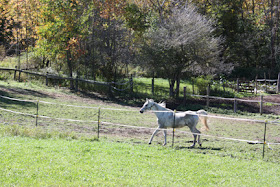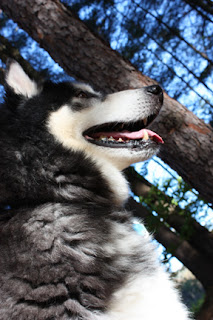The short version is that a portion of what I will call hive A swarmed and we made a second hive, Hive B, out of the swarm, so I now have 2 hives. I have decided to recombine them because Hive B has not utilized all of its frames so they may not have enough to survive on through the winter. (editors note: for those of you that read the first edition of this post, as of yesterday I was going to keep the 2 hives separate but for some reason my gut kept telling me to combine them-that seemed to be what was best for the bees at this point. So today I did just that.)

The bees have been busy as summer turned to fall. The crop of golden rod that we get each September into October is heaven on earth for bees. The use the pollen from the golden rod to make a lot of nectar and in turn honey. If our hive hadn't split in two we might be getting honey this year but as it stands we will not. I will let the bees use whatever they have made to get them through the long cold winter as they will feed on it throughout.
Take a look closely at the yellow "beads" on the legs of the bees as they come in for a landing. That is the pollen that they get from the golden rod and bring back to the hive. Pretty incredible animals! I took these photos a few weeks ago when the weather was still relatively warm and the golden rod was still in bloom. As it gets colder and rainier we are seeing less of the bees as they too bunker down.
The following photos of me in my bee jacket are courtesy of my dad, Jerry, who took them today while I was working on Hive A.
Removing the cover...
Prying the top "super" off. The bees glue each hive component together with stuff called propylus which is thick, hard and ultra sticky. Stradavarious used to use it on his violins.
Here I have already removed the super, which the bees did not use at all. The frames that I used were made of plastic foundation and the bees resisted it. The bottom section is called the brood box where all the baby bees are made as is honey etc. The super is for honey only and baby bees are not made there. Kind of bummed that they did not use it but as long as brood box is full they will be set for winter. Next spring I will put the super back on and coat the plastic foundation in bees wax to encourage them to use it.
First I moved Hive B over to Hive A and put it on top of A. I put a "feeder" on the hive in place of the super and I am about to pour a sugar solution in the feeder to feed the bees heavily to get them ready for winter. Since there are most likely 2 queens, 1 per original hive, they will have to work it out as the tow hives once again merge into one. I wonder if old friends will recognize each other?
You can see how thick the sugar solution is: 2 parts sugar to 1 part water.
That is your truly (the small white thing in the center)...
Here is a cluster of bees hanging on to the queen excluder that I removed from the hive. The excluder is no longer needed when the super is not being used. The excluder is used to keep the queen from entering the super so that she remains in the brood box only. The spaces between are only large enough for the other bees to get through. The queen is too big to do so.
So two, that were one and became two, are now one again. We'll see how it goes. Some of the bees from Hive B that were not in the hive when I moved it to the Hive A location were confused when they could not find home. I have placed a temporary box where their home was in hopes of gathering them to move them as well. I put some of the components from their original hive there so that they recognize the smell.













































